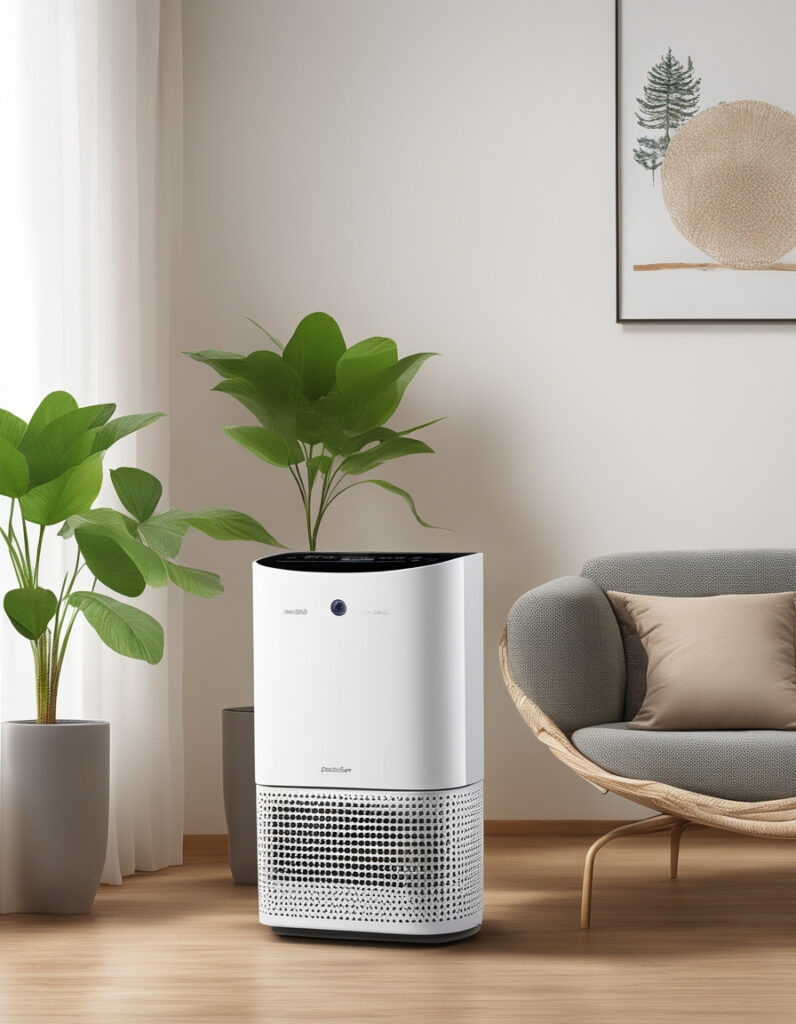How to Purify Indoor Air Quality at Home...
Indoor air quality (IAQ) is a crucial aspect of our living environment, significantly impacting our health and well-being. Poor indoor air quality can lead to various health issues such as allergies, asthma, and other respiratory problems. This guide aims to provide practical, human-friendly strategies to enhance indoor air quality, ensuring a healthier living space for you and your family.
Understanding Indoor Air Pollutants
Before diving into purification methods, it is essential to understand the common indoor air pollutants:
1. Particulate Matter (PM): These tiny particles, including dust, pollen, and pet dander, can penetrate deep into the lungs and cause health issues.
2. Volatile Organic Compounds (VOCs): Emitted from paints, cleaners, and building materials, VOCs can cause headaches, dizziness, and long-term health effects.
3. Biological Contaminants: Mold, bacteria, viruses, and dust mites are common in damp areas and can trigger allergies and asthma.
4. Carbon Monoxide (CO): A colorless, odorless gas from burning fossil fuels, which can be deadly at high levels.
5. Radon: A naturally occurring radioactive gas that can seep into homes from the ground, leading to lung cancer risk.
Practical Steps to Improve Indoor Air Quality (IAQ)
1. Ventilation:
• Natural Ventilation: Open windows and doors regularly to allow fresh air to circulate, this helps dilute indoor pollutants and brings in cleaner outdoor air.
• Mechanical Ventilation: Use exhaust fans in kitchens and bathrooms to remove moisture and pollutants directly at the source.
2. Air Purifiers:
- HEPA Filters: High-efficiency particulate Air (HEPA) filters are effective in capturing 99.97% of particles as small as 0.3 microns. Place air purifiers with HEPA filters in commonly used rooms to reduce airborne contaminants.
- Activated Carbon Filters: These filters absorb VOCs, odors and gases, improving overall air quality. Consider purifiers that combine HEPA and activated carbon filters for comprehensive purification.
3. Houseplants:
- Certain houseplants, like spider plants, snake plants and peace lilies, can absorb VOCs and release oxygen, naturally purifying the air. Place these plants in different rooms to improve Indoor Air Quality (IAQ).

4. Regular Cleaning:
- Dusting and Vacuuming: Regularly dust surfaces and vacuum carpets with a HEPA filter vacuum to reduce dust, pet dander, and other particulates.
- Mopping: Use a damp mop to clean floors, which helps capture dust and allergens missed by vacuuming.
- Washing Bedding: Wash bedding, curtains, and stuffed toys frequently in hot water to kill dust mites.
5. Smoke-Free Environment:
- No Smoking Indoors: Prohibit smoking inside the home to prevent tobacco smoke from contaminating the air.
- Ventilate Cooking Areas: Use range hoods and ensure proper ventilation while cooking to reduce smoke and cooking odors.
6. Regular Maintenance:
- HVAC Systems: Regularly maintain heating, ventilation, and air conditioning (HVAC) systems. Change filters as recommended to ensure they effectively trap pollutants.
- Air Duct Cleaning: Periodically clean air ducts to remove accumulated dust and debris, ensuring efficient airflow and reducing airborne contaminants.
Additional Tips for Specific Needs
- Allergy Sufferers: Use allergen-proof mattresses and pillow covers and choose hardwood or tile flooring instead of carpets.
- Pet Owners: Bathe and groom pets regularly to reduce dander as well as create pet-free zones, especially in bedrooms to minimize exposure to allergens.
- Home Renovations: Choose low-VOC or zero-VOC paints and building materials and ensure proper ventilation during and after renovation to disperse any released pollutants.
Conclusion: Improving indoor air quality requires a multi-dimensional approach, combining effective ventilation, air purification, regular cleaning and mindful choices of products and materials. By implementing these practical steps, you can create a healthier living environment, reduce exposure to harmful pollutants and enhance overall well-being for you and your family at home. Remember, the key to maintaining good indoor air quality (IAQ) is consistency and diligence in applying these practices.
Maintaining indoor air quality is not just about comfort; it’s about protecting your health and the health of your loved ones. Taking these steps to purify indoor air can lead to significant improvements in your quality of life.


Pingback: Top 5 Single Door Refrigerator under Rs 20,000 For Home